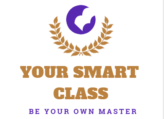Introduction
Education is the cornerstone of human development and societal progress. In the modern era, nations across the globe are focusing on enhancing the quality and competitiveness of education to prepare learners for global challenges. Quality education ensures that students acquire the necessary skills, knowledge, and values, while competitiveness enables educational institutions to maintain high standards and global relevance.
Enhancing quality and competitiveness in education is not just about producing high academic results; it involves nurturing creativity, critical thinking, digital literacy, and lifelong learning skills.
1. Understanding Quality in Education
Quality education refers to an education system that provides equitable learning opportunities and enables learners to achieve their full potential. According to UNESCO, quality education encompasses four key dimensions:
Learners who are healthy, motivated, and ready to learn
Teachers who are professionally trained and competent
Curriculum and learning materials that are relevant and inclusive
Learning environments that are safe, supportive, and resource-rich
High-quality education focuses on both academic excellence and holistic development, ensuring that students grow intellectually, emotionally, socially, and morally.

2. Competitiveness in Education
Competitiveness in education refers to the ability of institutions, systems, and individuals to maintain high performance in comparison to global or national standards. It involves fostering excellence through innovation, accountability, and global benchmarking.
In a globalized world, education systems must compete to:
Produce skilled graduates who meet international standards
Attract foreign students and collaborations
Participate in global university rankings
Encourage lifelong learning and entrepreneurship
Competitiveness also drives institutions to continuously innovate, evaluate, and adapt to changing educational and economic demands.
3. Key Strategies to Enhance Quality and Competitiveness in Education
(a) Curriculum Innovation and Reform
A dynamic and flexible curriculum is the foundation of quality education. It should:
Promote interdisciplinary learning
Include emerging areas like Artificial Intelligence, Environmental Studies, and Financial Literacy
Integrate values, ethics, and civic education
Encourage experiential and project-based learning
Curriculum reform must align with national education policies and global learning frameworks to ensure that learners remain competitive in the international arena.
(b) Teacher Professional Development
Teachers are the backbone of the education system. Enhancing quality in education largely depends on their competence, motivation, and professional growth.
Strategies include:
Regular in-service training programs
Workshops on digital pedagogy and assessment methods
Mentorship and peer-learning initiatives
Incentives for innovation in teaching
Continuous professional development ensures that teachers remain updated with modern teaching-learning practices and contribute effectively to classroom excellence.
(c) Technology Integration in Education
The digital transformation of education plays a pivotal role in ensuring quality and competitiveness. Technology enables:
Personalized learning through adaptive learning software
Online learning platforms for remote and flexible education
Digital assessment tools for performance analysis
Data-driven decision-making for institutional improvement
Using tools like AI-based tutoring systems, LMS (Learning Management Systems), and interactive e-content bridges learning gaps and promotes inclusive education.
(d) Assessment and Evaluation Reforms
Traditional assessment methods often emphasize rote learning rather than understanding. To enhance quality:
Focus on competency-based assessment
Use formative assessments for learning improvement
Introduce digital portfolios and rubrics-based evaluation
These reforms encourage creativity, analytical thinking, and problem-solving skills among students.
(e) Quality Assurance Mechanisms
Quality assurance ensures that educational standards are maintained and continuously improved. Institutions can achieve this by:
Establishing Internal Quality Assurance Cells (IQAC)
Conducting accreditation through national and international agencies (e.g., NAAC, NBA)
Engaging in external peer reviews
Collecting regular feedback from stakeholders
These mechanisms ensure accountability, transparency, and continuous progress in education.
(f) Promoting Research and Innovation
Educational competitiveness thrives on innovation. Institutions must:
Encourage student and teacher-led research
Provide research grants and incubation centers
Foster collaboration with industries and research institutions
Publish in peer-reviewed journals and conferences
Research-oriented learning cultivates critical thinking and problem-solving abilities essential for global competitiveness.
(g) Strengthening Public-Private Partnerships (PPP)
Collaboration between the government, private sector, and civil society can significantly improve education quality.
PPP can help:
Mobilize resources for infrastructure and technology
Design skill-based vocational programs
Share best practices and innovations
Enhance access to marginalized communities
These partnerships foster an inclusive and sustainable education ecosystem.
(h) Globalization and International Collaboration
Global exposure and exchange programs improve educational competitiveness.
Ways to achieve this include:
Student and faculty exchange programs
Joint degree and research programs
International accreditation and ranking participation
Cross-cultural competency training
Global collaboration prepares learners to thrive in multicultural environments and enhances institutional prestige.
4. Role of Government and Policy Frameworks
Governments play a vital role in setting policies that ensure quality and competitiveness in education. In India, initiatives such as the National Education Policy (NEP) 2020 aim to:
Promote holistic and multidisciplinary learning
Introduce National Curriculum Frameworks (NCF)
Strengthen vocational and skill-based education
Encourage research and innovation through the National Research Foundation (NRF)
Such reforms align national education with Sustainable Development Goal 4 (SDG 4)—“Ensure inclusive and equitable quality education and promote lifelong learning opportunities for all.”
5. Challenges in Enhancing Quality and Competitiveness
Despite numerous efforts, several challenges persist:
Inequitable access to quality education
Shortage of trained teachers
Poor infrastructure and digital divide
Rigid curricula and outdated pedagogy
Lack of accountability and assessment reforms
Addressing these challenges requires collaborative action among policymakers, educators, parents, and the community.
6. The Way Forward
To build a future-ready education system:
Emphasize learner-centered pedagogy
Encourage innovation and research
Ensure equitable access to quality education
Foster global collaboration and benchmarking
Promote sustainable and inclusive practices
A culture of continuous improvement and shared responsibility can make education systems both qualitatively strong and globally competitive.
Conclusion
Enhancing quality and competitiveness in education is a long-term, multi-dimensional process. It demands a holistic approach involving curriculum reform, teacher empowerment, technological advancement, and strong policy support. Quality education not only nurtures capable individuals but also drives national progress, social justice, and global harmony.
By embracing innovation and excellence, educational institutions can truly become centers of learning that empower future generations to succeed in an ever-evolving world.
Share this:
Discover more from YOUR SMART CLASS
Subscribe to get the latest posts sent to your email.







